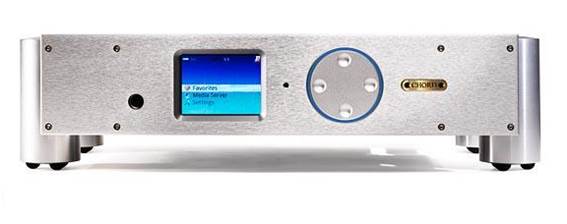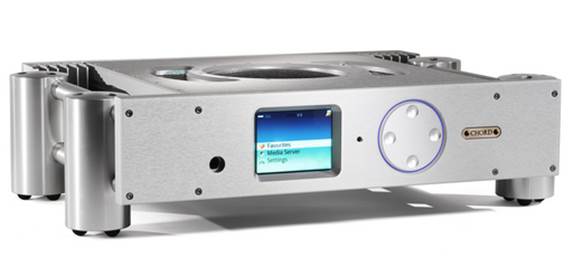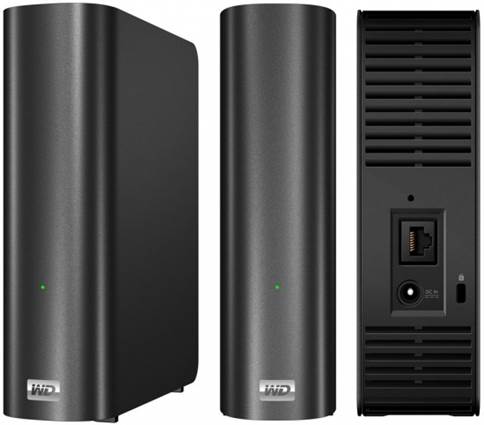Last month’s Bristol Sound and Vision
Show saw the second annual Hi-Fi Choice high-resolution digital audio demo.
Lord of the files we reveal all...
Right now, the way people buy, play and use
music is going through a period of transition the like of which hasn’t been
seen since the advent of CD back in the early eighties. Many people are
migrating to streamed music sources, and/or digital downloading, while many are
seriously contemplating it.
With this in mind, we decided to stage a
follow up to last year’s hi-res demo at the Bristol Sound and Vision show, this
time focusing on streamed music via a home network rather than the ‘Mac and
DAC’ approach. The object of the demo was to introduce a streamer and its
associated components to readers, many of whom had little idea of how it
worked, and demonstrate the sonic differences possible between standard
CD-quality music and hi-res. The event proved a rip-roaring success; that
raised as many questions as it answered!

Other
options are available, but for DP the streamer of choice is the Chord DSX 1000
The odyssey
The first question many people asked was,
“why move to streamed music?” and the answer is: no-one’s going to force you.
CD is now in the twilight of its years, but it’s still going to be around for a
while and if you’re a network music player Refusenik, you’ll not suffer too
much by sticking with it. Moving to a networked music player should be seen as
a positive thing offering you a wealth of extra choice over the quality of the
music you can play – rather than a chore. But the general level of confusion as
to how to actually do it means that many see it as an onerous thing. One of the
purposes of the demo was to show it can be done easily and inexpensively.
Another common query was, “if I decide to
go ahead, how do I do it?” The joy of networked music is that it’s largely
format agnostic with CD you’re stuck in 1983 with 16-bit, 44.1kHz resolution,
but with a streamer you can download hi-res files or rip 16/44.1kHz copies of
your existing CDs, or both.
As it transpired, many were tempted by the
hi-res side of things, but had practical worries about migrating their silver
disc collections to computer hard drive (s). Many people I spoke to said they
owned 100s of CDs and that it would take several days or even weeks to do so.
There are CD ripping services such as
Ripcaster or Podserve – but these are expensive (between 50p and $1.5 a disc)
and people don’t want to send their CDs away. The good news about ripping is
that once you’ve done it, you don’t need to do it again. Or rather – you
shouldn’t if you back your data up! This is of course essential. Should you
wish to do it manually, the choice of the cognoscenti is dBpoweramp, which can
be found online at: www.dbpoweramp.com.
File formats
As for the best format to rip music into
there was some disagreement. The purest format is WAV as it needs the least amount
of processing, but FLAC is easier to handle as it provides metadata (artist,
album name, artwork etc.). It also offers a reduction in the amount of disc
space taken, without removing any data from the file itself; it compact the
data rather than compressing it. Some claim that FLAC sounds identical to WAV,
but in my experience there’s a slight loosening of focus to the sound. Just as
Apple’s Lossless codec loses that last half a percent of sweetness and
openness, so does FLAC.
The streaming system
Now you need a streamer. For our demo we
chose the new Chord DSX 1000 – a beautifully built, brilliant-sounding design
that sells for $10,500. It’s worth pointing out that the Chord is based on the
Stream Unlimited platform. This is a very stable streaming engine that gives
great results and boasts an easy to see color screen display. There are other
more affordable products based on the same platform, such as the $2,100 Musical
Fidelity M1CLiC, which works in just the same way.

The
new Chord DSX 1000
This is connected to your router; for
almost everyone this isn’t an additional cost, as we’ve almost all got
broadband internet anyway. Interestingly, you don’t need to connect your router
to the internet. So even if you’re not online, you can still run a network-based
music system. The router simply acts as a connecting ‘node’ for the third bit
of kit you’ll need – your network attached storage (NAS) device. This is simply
a hard drive in a box; it plugs into the router and your streamer plugs into
the router.
For the purposes of the demo, we used a WD
My Book Live ($148 for 2TB), which is a great ‘plug and play’ device with media
server software built in. All you need to do is to copy your music files to it,
and the streamer will see them and be able to play them. One nice thing is that
you don’t need to keep this, or indeed the router, anywhere near your hi-fi
system; only the streamer needs to be close (as you’ll need to plug it in with
RCA or XLR interconnects). The NAS drive can sit in a cupboard or under the
stairs, connected to the router by Ethernet cable. We’d also recommend the
router is wired to the streamer too; the Chord only works this way but cheaper
streamers oft en come with Wi-Fi. This is convenient, but doesn’t sound quite
as good.

WD
My Book Live
The Chord comes with a swanky remote, and
has front panel transport controls just like a regular disc spinner, so no
other controllers are needed. However, if you have an Apple iPod touch, iPhone
or iPad or equivalent Android devices – you can use it to control the system
even more easily. The app that we used is 8player (http://08soft ware.com),
which is a $6 download at the iTunes store. It gave very stable, easy control
of the Chord streamer, and should work with most other network players.
For me, this is where a streaming system
really begins to romp ahead of a conventional CD. True, the CD player is easier
to unbox, switch on and get going, but a streamer offers the ability to play
pretty much any file you want at any resolution (including CD of course), and
to access it via a Smartphone or Tablet – so you can scroll through thousands
of tracks and call up the one you want to play without leaving your chair. Last
but not least, there’s the enjoyment of hearing high-resolution versions of recordings
you’ve only previously been able to hear at CD-quality before and this was the
heart of our hi-res demo.